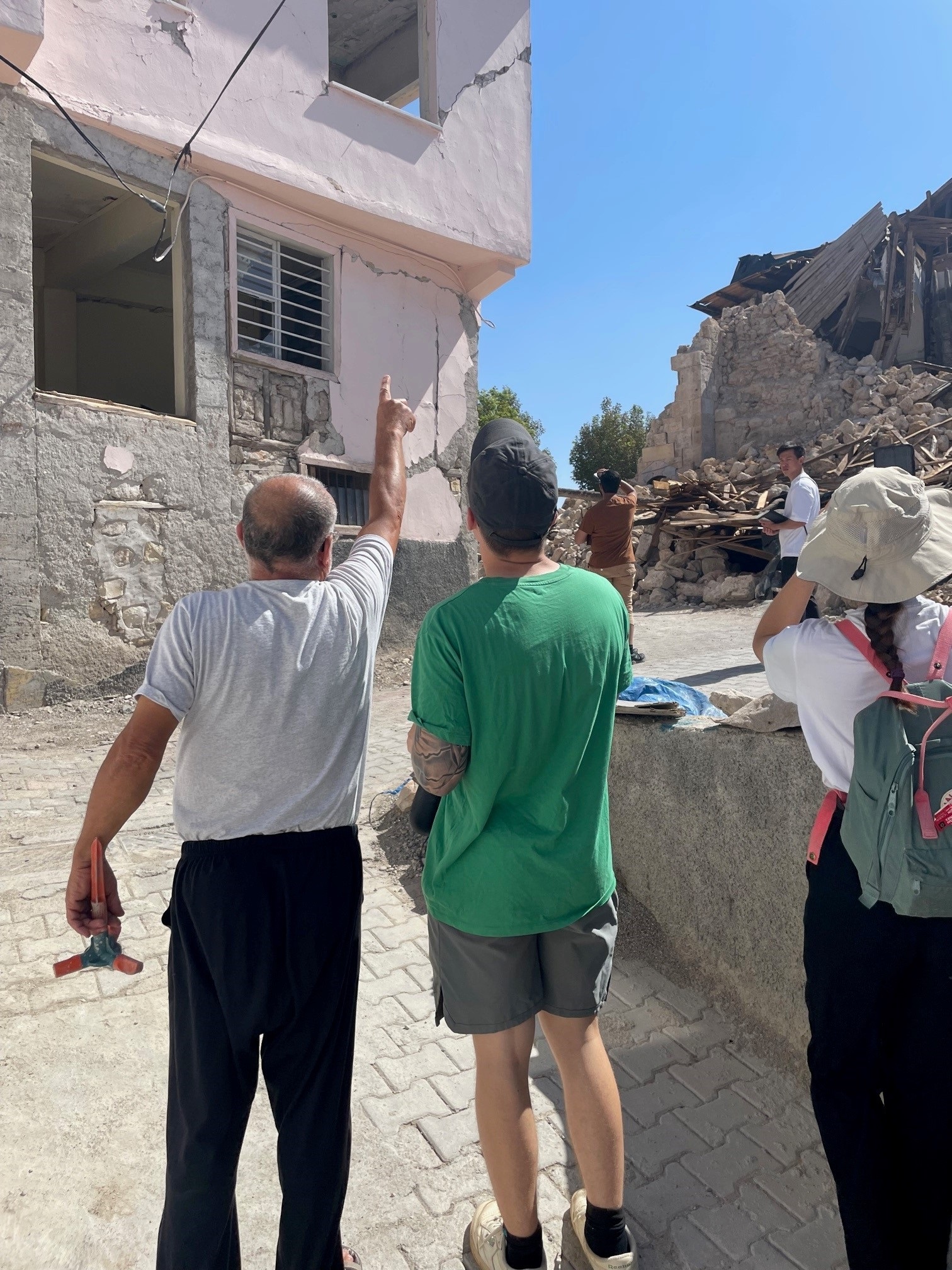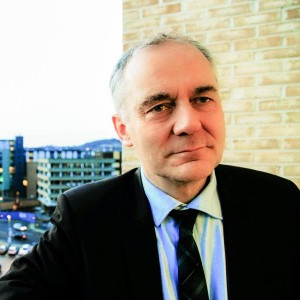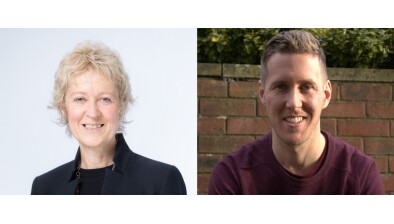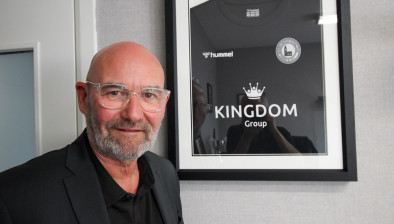Black’s Blog: Can post-disaster reconstruction inform Scotland’s own housing emergency?
Laurence Wood (right) talking through the construction progress and training in the Tagpuro shelter construction with representatives from UN Migration, the main benefactor of these sites in Tacloban City, Phillippines
Jimmy Black reflects on a conversation with architect Laurence Wood about rebuilding homes after natural disasters.
Seeing your home completely destroyed by a typhoon, an earthquake, or an airstrike must be one of the worst things that can happen to you. Once your government and the international aid agencies get themselves into gear, there’s a chance you might get some transitional housing in which you may have to live for years.
Our guest on the last Scottish Housing News podcast of 2023 is Laurence Wood, an architecture lecturer who has volunteered and worked professionally to help rehouse people in the USA, the Philippines and Turkey. He says that loading a pop-up house into a container and dropping it into a transitional housing site isn’t the best way to meet the needs of people who have suffered disaster.
Instead, he believes using local materials, putting the skills of local artisans to work and using the rebuilding effort to train and expand the workforce is a better way forward. In the Philippines huge numbers of coconut trees had been destroyed by typhoon Yolanda (alternatively Haiyan), providing an abundant source of material for displaced people to build new homes for themselves and their neighbours.
The Tagpuro transitional shelter site with raised shelter that allow cross flow ventilation and storage for animals. These shelters have a coco lumber superstructure, sawali weaved cladding and nipa grass roofing
Some of Laurence’s students at DJCAD, the University of Dundee’s art and architecture school, went to Turkey to assist on housing projects in the aftermath of the 2023 earthquake. Working hard, sleeping in tents, showering with a bucket and scoop and taking tea in the market with the locals was all part of their education; getting their hands on tools and building stuff added a different dimension to their desk-based learning. Architects generally don’t get to build the things they dream up. Engineers and builders do that.
One of the factors allowing innovation in disaster zones is a looser or non-existent building code. That may have led to houses being unfit to withstand earthquakes or high wind; equally, it allows innovation so that transitional or new permanent housing can be built differently, taking account of local needs.

Dundee MArch students Robbie Fowler and Jordan McKee working on shade structures in the Turkish Syrian transitional camps in Kahramanmaras, Turkey
Talking to Laurence got me thinking about Scotland. Would that innovation be possible here after a major disaster, with our strict building controls, planning restrictions and addiction to traditional methods of construction? As it happens, we already have many personal major disasters to deal with in the form of homelessness.
With major cities declaring a ‘housing emergency’, should we be thinking about what we can change or do differently to get homeless people off the streets, and out of hostels, bed and breakfast and poor quality private rentals?

Dundee MArch students Jian Hui Lin and Kuba Duda listening to the locals' experience of February's earthquake in the historic Divanli n Kahramanmaras, Turkey
I plan to write more about this, but listening to Laurence and reading about the work of some of his students gives me some hope. He is extremely keen to turn his talented young theoreticians into seasoned practical people who know how to build things. Maybe we can find a way of putting them to work.
Kieran Findlay and I met Laurence in Dundee & Angus Chamber of Commerce’s podcast studio on Dundee’s waterfront.
Further reading:
The Scottish Housing News Podcast is co-hosted by Kieran Findlay and Jimmy Black. All episodes are available here as well as on the following platforms:









